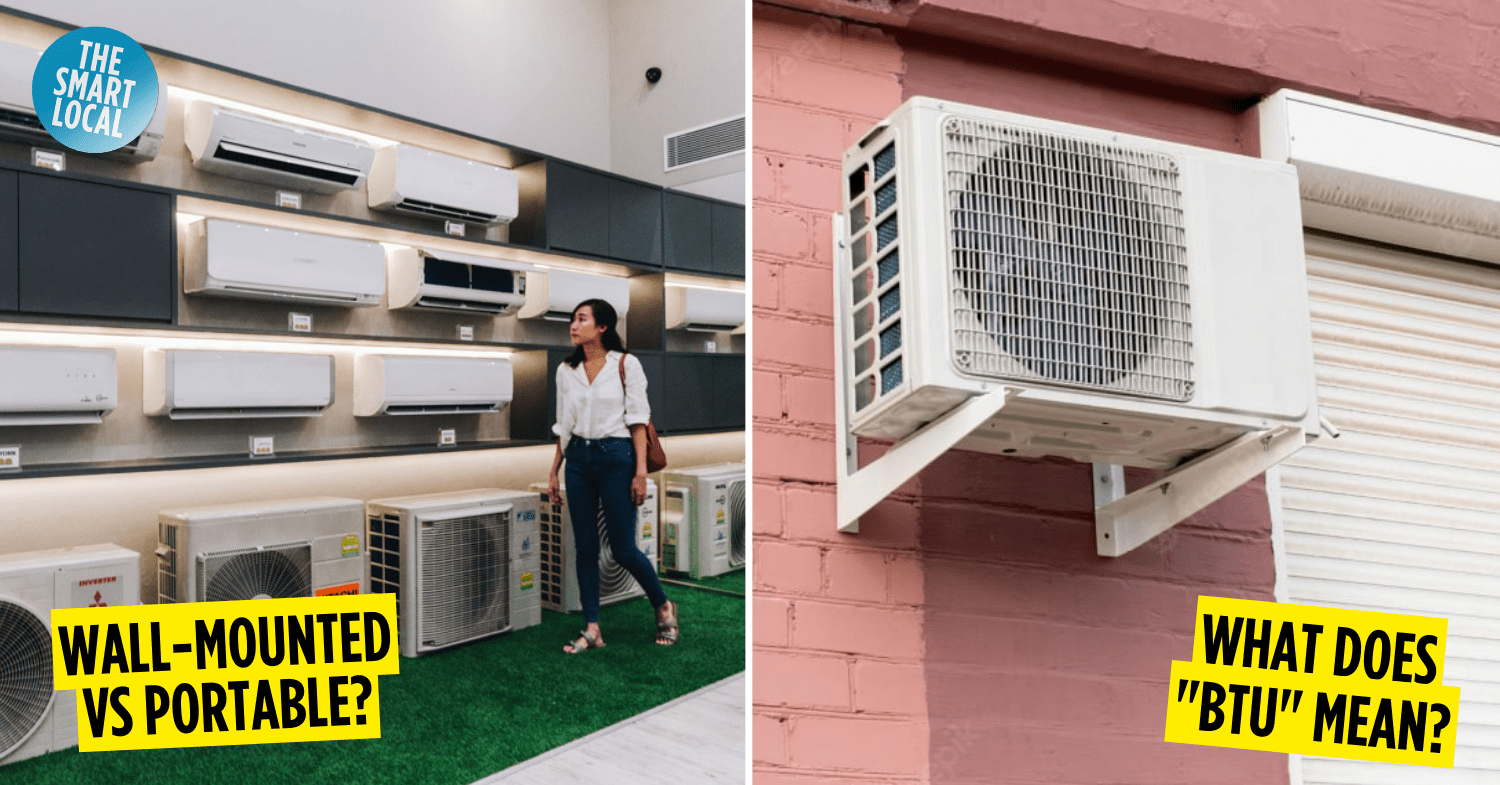Aircons in Singapore
Things that are crucial to sustain human life: food, water, shelter, air, and aircon. At least that seems to be the case in tropical Singapore, where it’s perpetually humid and temperatures can soar over 35°C. Fitting your home with a reliable aircon system is beyond creature comforts, but a matter of survival.
If this is your first rodeo, however, you may be stumped by terms like energy rating, BTU, and how aircon units have system 1, 2, 3, and so on in the name. Before you walk into an appliance store to purchase a unit willy-nilly, here is a comprehensive guide to aircons in Singapore, along with some reputable brands and highly rated models to start you off.
Types of aircon – Split vs portable
Split aircons
There are 2 main types of aircons; split is the standard type which most Singaporean households are fitted with, so-named because it is split into an indoor and outdoor unit.
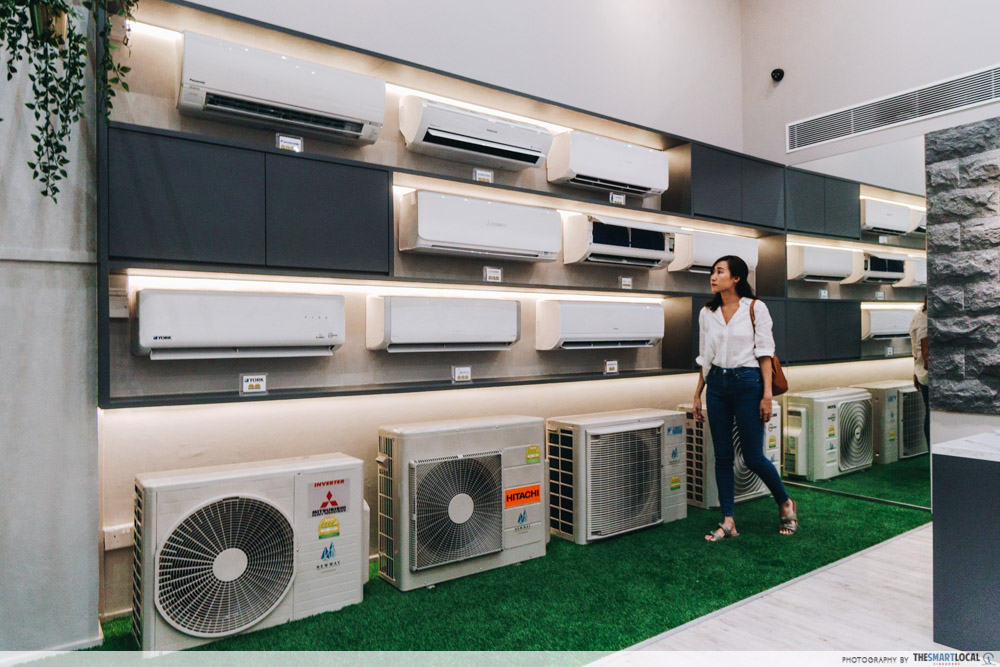
Indoor units (top) and outdoor units (bottom).
The outdoor unit – called a condenser – is installed either on or near the exterior of the wall that will be cooled. This is where you’ll find the compressors, tubing, and various coils. Meanwhile, the indoor unit is what you see day in and day out, mounted on the wall.
Split aircons are favoured because their powerful motors are able to cool rooms down quickly. Despite their power, they’re also able to operate under relatively low noise levels. The downside is that they’re usually costly to install, and any malfunctions usually require professional repairs which may be expensive too.
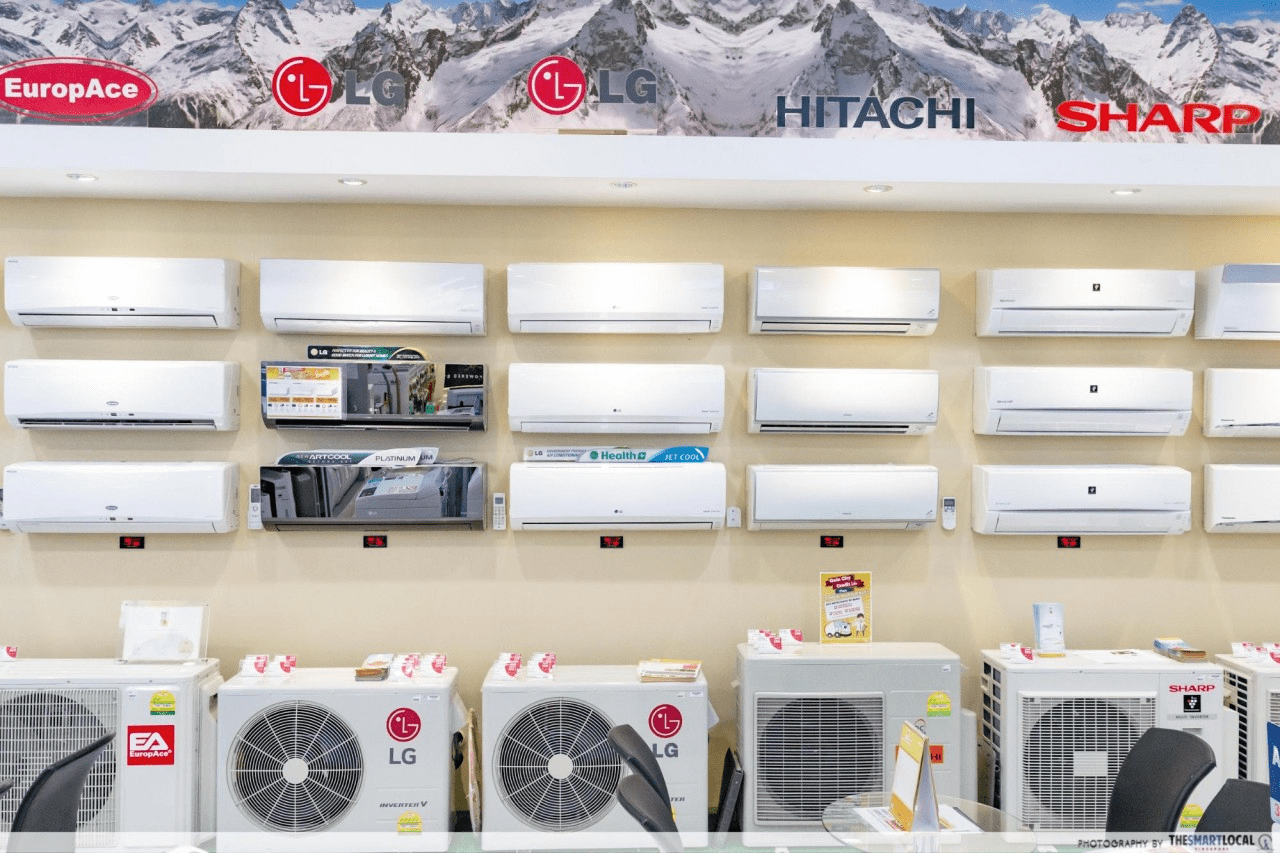
Within the category of split aircons, there are single split and multi-split types. A single split means 1 outdoor unit per corresponding indoor unit. These are cheaper to install and maintain, as the setup is more straightforward and there are less pipelines to deal with.
Multi-split aircons have 1 outdoor unit powering a channel of multiple indoor units. Though costlier to install, the upside is that because there’s only 1 main system powering the entire household’s aircon units, it’s a lot more energy efficient. Hence, you’ll save more money on utilities.
Portable aircons
As the name suggests, portable aircons are smaller and lighter standalone cooling units. Their position is flexible as you can plug them into whichever part of the room has a socket.
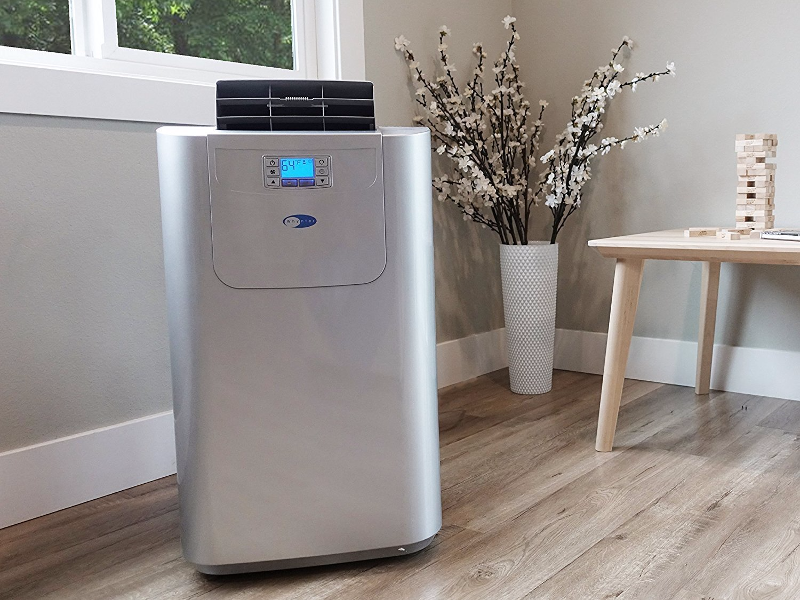
Image credit: Engaging Florals
Depending on the size and power of the model, it may also come with an exhaust hose to channel heat away from your living space. Portable aircons are usually used to cool smaller spaces, or as an interim solution before a main split type aircon is installed.
Although they’re handy to move between rooms depending on where you need it, their cooling strength is comparatively lower. You’re likely to struggle if you’re trying to cool down a large room, and it may take some time to power up and lower the temperature.
Find out more about portable aircons in Singapore.
Guide to aircon systems
On your aircon shopping journey, you may see models with the name system 1 up to 5. In a nutshell, the system number corresponds with the number of aircon units inside your house. For instance, if you’re installing split aircons in 3 bedrooms and the living room, you’d need a system 4 compressor.
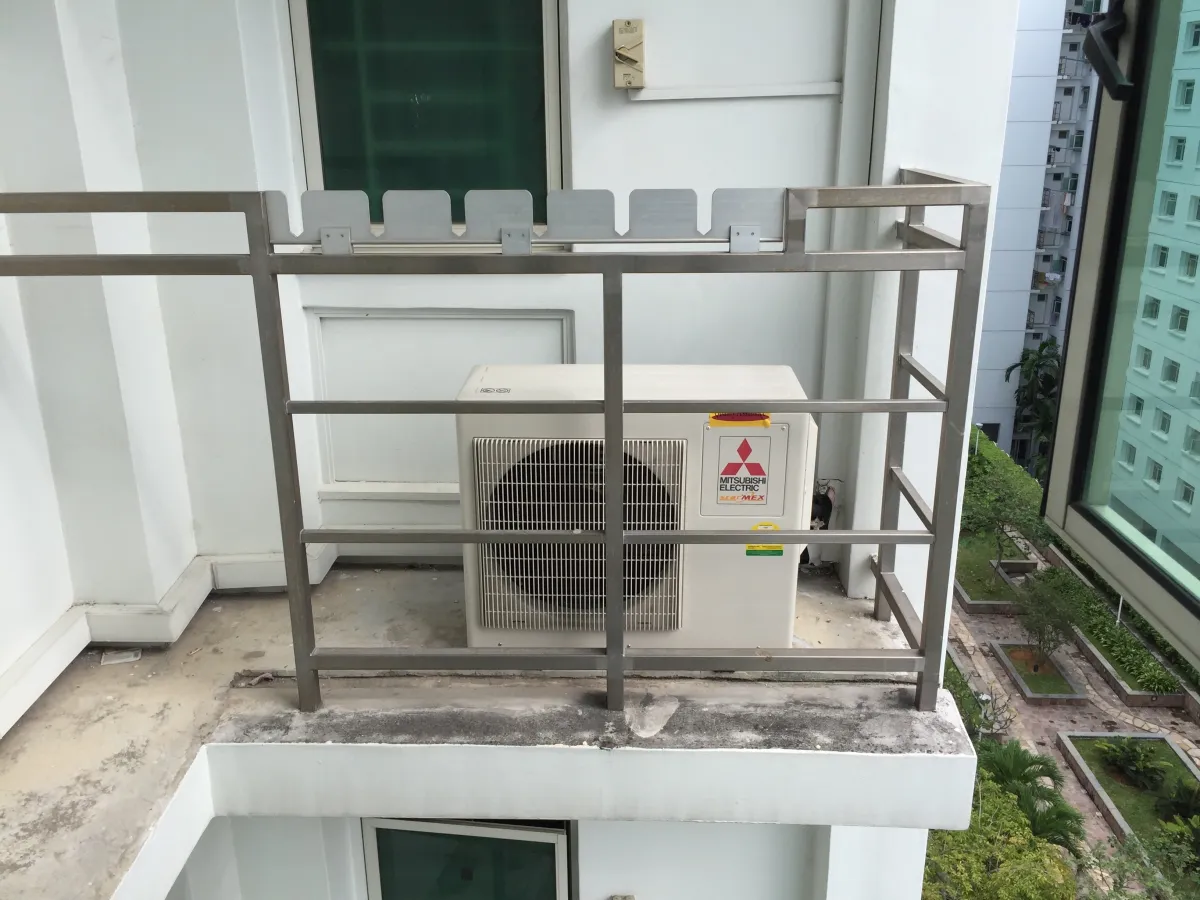
Image credit: Adrian Video Image
Prior planning is needed to determine which system you should get, as it’s tougher to add an extra compressor if you decide at a later stage to install more aircon units. When in doubt, consult the sales staff at your appliance store of choice to see which system best suits your household’s needs.
What does the BTU measurement mean?
If you’re confused what BTU stands for when comparing specs across aircon models, it stands for British Thermal Unit. It’s the metric used to determine an aircon model’s cooling capacity, AKA the power needed to cool a space based on its size. The higher the number, the more powerful the cooling.
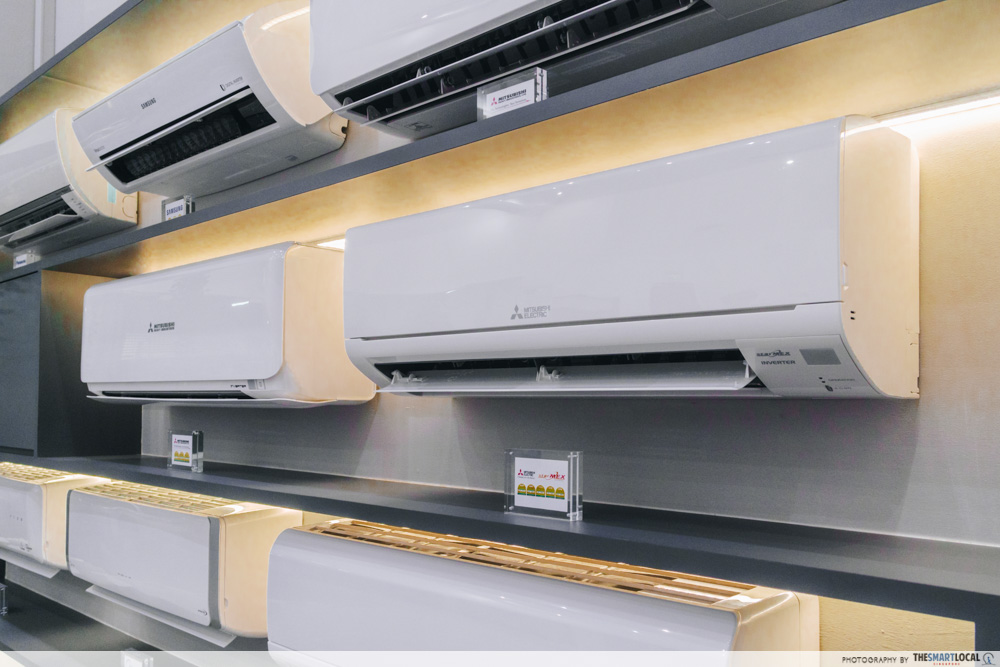
Other factors which affect the BTU requirement include direct sunlight exposure, proximity to other appliances, and even the number of people usually occupying the space.
Don’t be swayed by high figures thinking the bigger the number, the better. A cooling capacity of 9,000 BTU/hr is sufficient to cool the average HDB master bedroom. So anything beyond that would just be sapping your electricity needlessly.
To make the most of your aircon’s cooling capacity without having to invest in a higher BTU model, make sure to implement these money saving aircon tips.
Energy rating & certification from NEA
Beyond the technical aspects of aircon purchasing, one of the most important considerations is energy rating. Granted by the National Environmental Agency (NEA)’s Energy Label, the energy rating is a nationally standardised rating system.
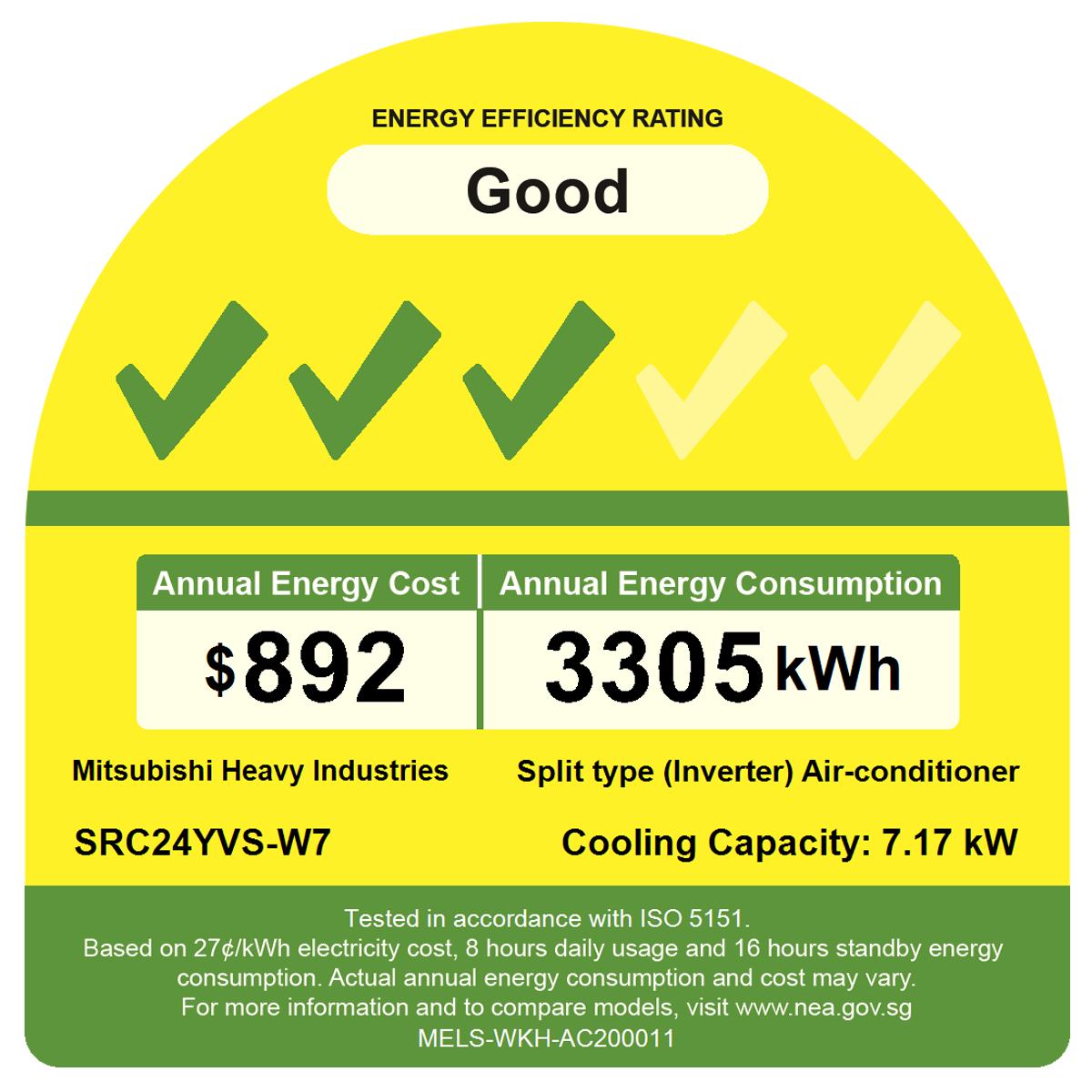
Example of an Energy Label sticker.
Image credit: Cool Serve
All aircons have to display the Energy Label sticker in order to be retailed, and the only way to get the sticker is to be properly registered and certified under NEA. That way, you won’t have to worry about dodgy off-the-market brands which have the potential of being faulty or even hazardous.
The energy rating conveniently tells you at a glance what the annual energy cost and consumption are. The more ticks the better, with 5 ticks being the highest possible rating.
Best aircon brands in Singapore & recommended models
Now that you’re familiar with the basic terms and know what to look out for based on the cooling needs of your home, here are 6 notable aircon brands in Singapore for both split and portable types.
1. Daikin – Energy efficient & comes with smart functions
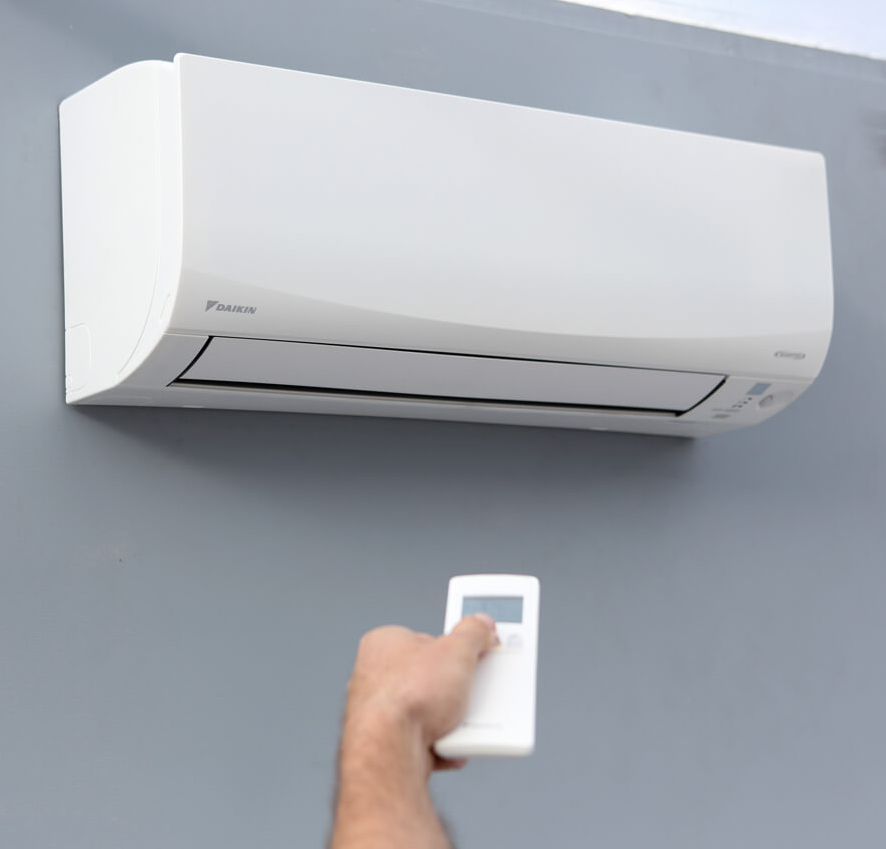
Image adapted from: Luce Aircon
This Japanese brand has become a local household name, largely due to their catchy “5 Ticks, Daikin” jingle. Daikin’s certified 5-tick slogan applies to their Smile Series, which has been further upgraded to the iSmile Series. This means that the aircon units now come with smart functions, like mobile app control so you don’t have to worry about losing the remote.
There are also built-in smart functions to help you save even more money on top of the energy efficiency. This includes the Intelligent Eye Sensor which detects movement in the room to adjust the direction of airflow – no more cooling down the floor and furniture while you’re sweating in a corner.
Price: From $1,169 for Regular Split Aircon, from $2,869 for iSmile Series.
Find out more about Daikin aircons.
2. Mitsubishi Electric – Saves electricity & purifies air
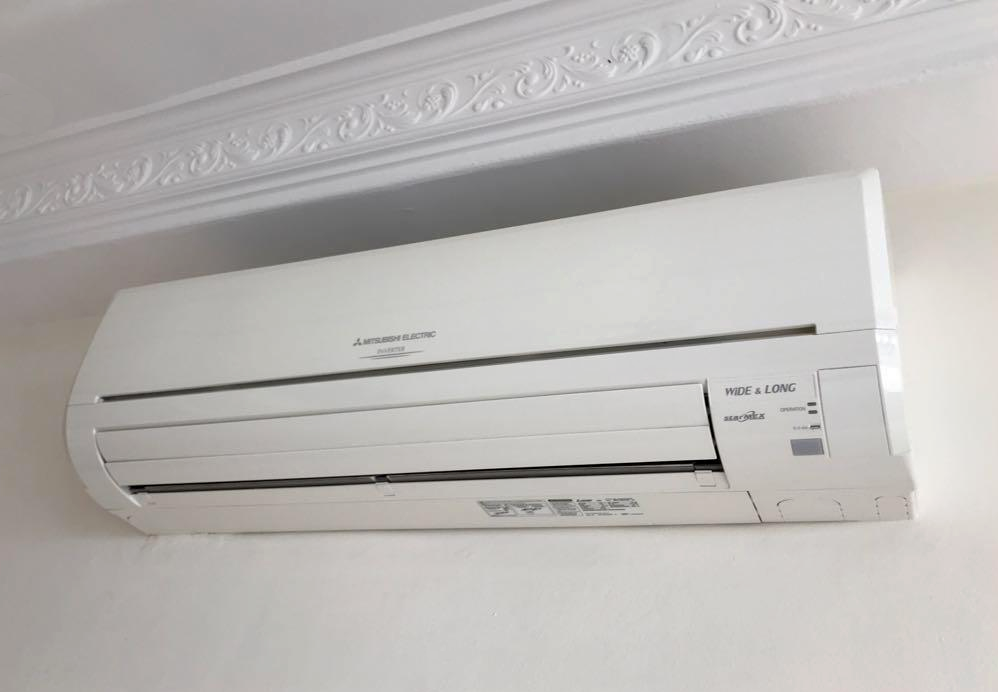
Image credit: @4nk17
Mitsubishi Electric’s Starmex GP series focuses on energy efficiency as well as cleaner and healthier air quality. Besides earning 5 ticks, aircons in this series are also the first in the world to be fitted with a dual barrier coating. It’s able to prevent dust, dirt, oils, and smoke from getting trapped within, so you won’t have to deal with icky particles recirculating into the room.
Coupled with a microparticle filter which is said to remove 99% of fine particles in the air, you and your family will get to breathe easy and look forward to a lower utility bill each month.
Price: From $1,149 for Starmex System 1
Find out more about Mitsubishi Electric aircons.
3. Midea – Budget-friendly, lower in noise & vibrations
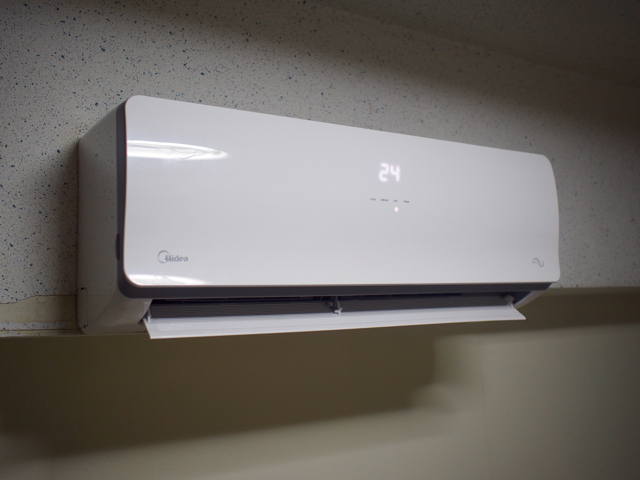
Image credit: Shahr33n
While Singaporeans usually associate renowned aircon brands with Japanese companies, Midea is a Chinese brand which is well-loved not only in its home country but abroad. Prices are kept affordable at under $1,000 per single split unit, inclusive of installation. However, the energy rating of their units is 4 ticks max – which is not too shabby at all.
Energy efficiency aside, Midea’s aircons are said to be lower in noise and vibration levels compared to other brands on the market. This is great for families with babies, or if you’re a light sleeper in general.
Price: From $899 for Single Split Aircon (MSEOD-09)
Find out more about Midea aircons.
4. LG – Sterilises air, prevents mould & bacteria
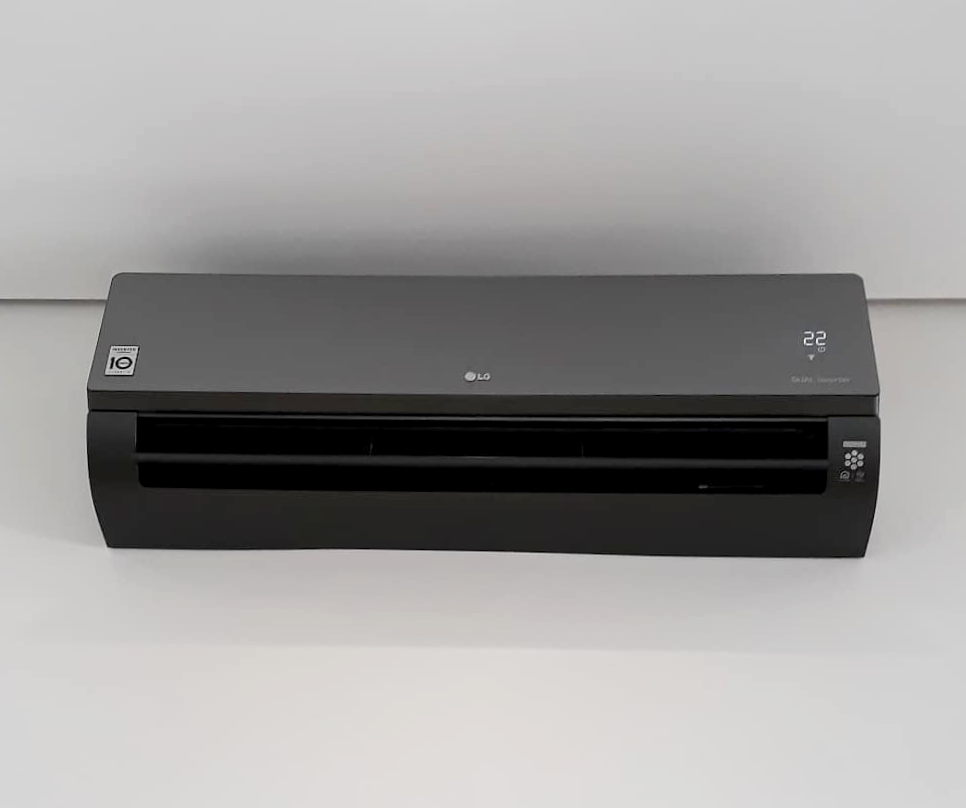
Image credit: @bomclimalondrina
A little over $1,000 will fetch you a basic LG aircon model which has a 3-tick energy rating. However, splurge to the $2k range and you’ll get to experience their new high-tech Artcool system.
Units under this series come fitted with a patented ionising system called the “Plasmaster”. It’s said to be able to sterilise and deodorise harmful particles and foul odours in the air. This means that it’s not only preventing the growth of mould and bacteria within the aircon filter, but also obliterating their particles floating around the air of your home.
Plus, that gunmetal grey looks pretty darn sleek in a sea of white aircons that tend to yellow over time.
Price: From $1,079 for Regular System 1, from $2,299 for Artcool System.
Find out more about LG aircons.
5. EuropAce – Portable aircons with powerful motor & built-in purifier
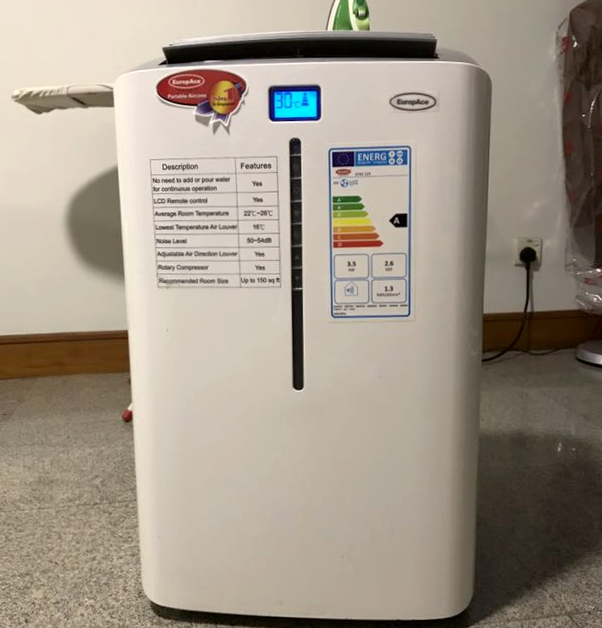
Image credit: @bluebamboo
Mainly known for their portable aircons, EuropAce has a collection of split aircons too. Perhaps the split type models are lesser-known as they’re lower on the energy efficiency end, with a 2-tick rating for the most basic model just shy of $1,000. Their highest energy-rated split aircon model is 4 ticks, but comes with a hefty price tag of $2,649 onwards.
You may be better off sticking to their fan favourite portable aircons. Although they come at quite a pretty penny against other portable options on the market, they’re said to be a handy movable aircon that’s comparable to split aircons. Attributes include a dual motor for rapid and sustained cooling, different speeds and modes, and built-in filters for air purification.
Price: From $499 for Portable Aircon (EPAC 12T2), from $999 for Single Split Aircon (ESACS19SFC).
Find out more about EuropAce aircons.
6. Mistral – Modular portable aircons, powerful enough for large spaces
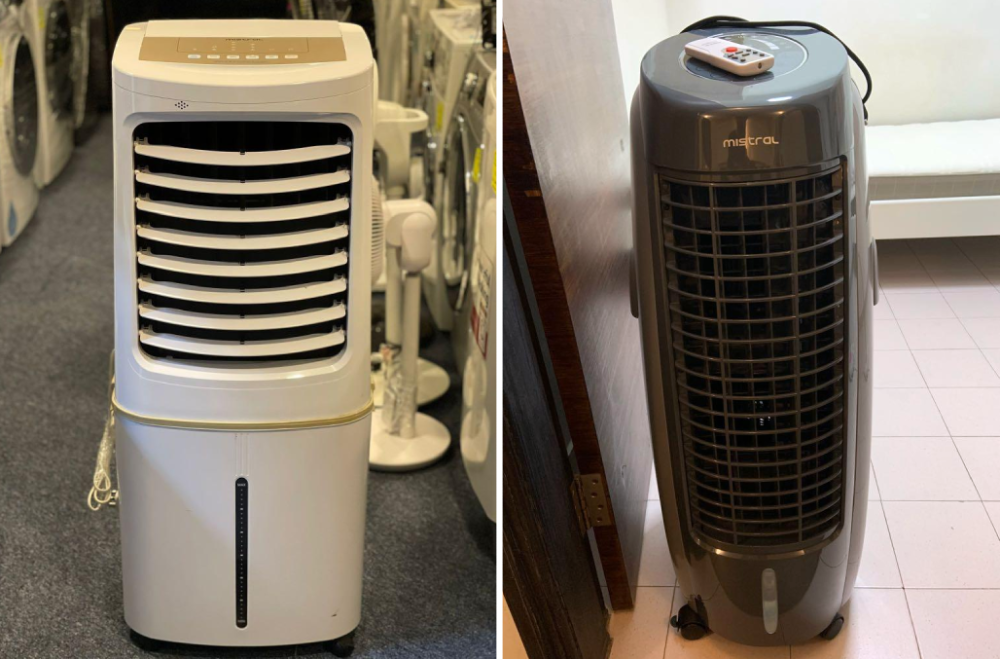
Image adapted from: @brilliant_shopper_22, @rodlama
You might be familiar with their fans, but did you know that Mistral is an Australian brand? Their portable aircons are lauded for being able to cool down even large spaces. And if they’re strong enough to tide users through sweltering Aussie summers, we’ll take that as confirmation of the aircons’ prowess – especially since they’ve been in the biz since 1968.
Unlike other portable aircons which come in standard shapes and slight variations in size, Mistral’s models are available in assorted shapes to fit different spaces. This modular concept lets you tuck it neatly into a designated spot so it doesn’t jut out and mess with your home’s aesthetics.
Price: From $144 for Portable Air Conditioner (MAC001E)
Find out more about Mistral aircons.
Things to consider when buying an aircon in Singapore
Now that you know the basics of purchasing an aircon in Singapore, you can determine which type, brand, and unit works best for your budget and household needs. Getting to chill in an airconditioned room makes life in sunny Singapore that much more pleasant, but keep in mind that the installation process requires some mental and physical prep.
While we wish it were as easy as plonking an aircon unit into your home The Sims-style, the setup of new aircons requires pretty extensive drilling and installation of accompanying pipes and covers. This means shifting furniture around accordingly, possibly having to repaint affected walls, and a thorough clean-up afterwards.
If that seems like too much of a chore at present, you can always turn to portable aircons. But if you’re willing to tide through the period of hassle, your rewards will be bountifully breezy.
Check out our other electronic product guides:
- Guide to purchasing electronics in Singapore
- Air purifiers in Singapore
- Multi-purpose cookware and kitchenware
- Powerbanks
- Robovacs
- Sound bars
Cover image adapted from: Lara Stock
